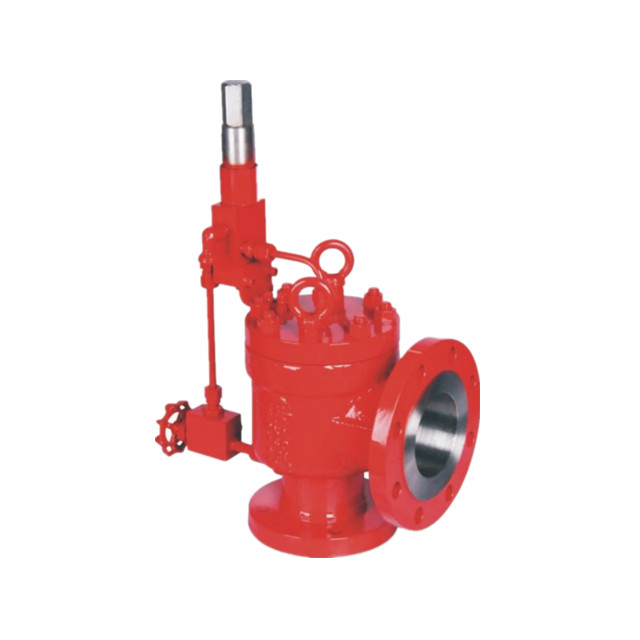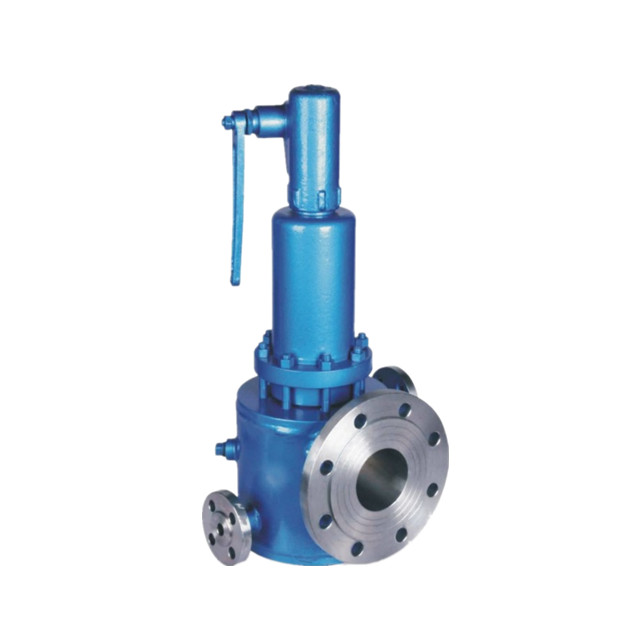İçindekiler
DeğiştirRelief valves and safety valves are both important for preventing system failures, but they differ in design and function. Learn about the key differences between the two in this comprehensive guide.
Basınçlı bir sistemin içindeki basınç arttığında, tahliye vanasındaki basınç yükselir ve emniyet veya kontrol vanası açılır. Her ikisi de sistem arızalarını önlemek için yararlı olmakla birlikte, tasarım ve işlev bakımından farklıdırlar. Tahliye vanaları, açma basıncının üzerindeki basınç artışıyla orantılı olarak basıncı tahliye edecek şekilde tasarlanmıştır ve genellikle sıkıştırılabilir akışkanların bulunduğu sistemlerde kullanılır. Tahliye vanalarının bir sistemde güvenlik amacıyla mı yoksa acil durum amacıyla mı kullanılacağı, sistemin basıncına ve çalışmasına bağlıdır.
Sırasında emniyet valfleri ekipmanı korur ve bir tahliye vanası basıncı tahliye eder, iki tip aynı değildir. Basınç, ayar noktasından yüzde üç daha yüksek olduğunda bir emniyet valfi açılır, basınç yüzde 10 daha yüksek olduğunda ise bir tahliye valfi açılır. Bir emniyet valfinin ayar noktası genellikle çalışma basıncı olarak anılırken, bir tahliye valfi genellikle yüzde 10 daha yüksek bir değere ayarlanır.
Tahliye Vanası Nedir?
Tahliye vanası, kullanım amacına bağlı olarak çeşitli malzemelerden yapılmıştır. Paslanmaz çelik ve karbon çeliği kullanılır iç yaylar. Pirinç en uygun maliyetli seçenektir; plastik ve alüminyum ise genellikle ağırlığı ve maliyeti azaltmak için kullanılır. Aşındırıcı akışkanların bulunduğu uygulamalarda paslanmaz çelik tahliye vanaları kullanılır.
Tahliye vanasının pek çok uygulamasından haberdar olmayabilirsiniz, ancak basınca duyarlı bir ortamda muhtemelen bir tanesiyle karşılaşmışsınızdır. Bu valfler, tehlikeli birikmeleri önlemek için basınçlı gaz veya sıvı akışını düzenler. Ne zaman kullanılırlarsa kullanılsınlar, bir basınçlı kaptaki basıncı düzenlemek için hayati önem taşırlar. Ayrıca işlerin sorunsuz yürümesini sağlarlar. Ekipmanın hasar görmesini önlemek için bu valflerin kritik öneme sahip olduğunu unutmamak önemlidir.
Types of Relief Valve
Direct Spring-Loaded Relief Valve
Direct spring-loaded relief valves are common in various industries.
They utilize a spring force to keep the valve closed, and when the system pressure exceeds the set point, the valve opens, releasing excess pressure.
These valves are known for their simplicity, reliability, and ease of maintenance.
Pilot-Operated Relief Valve
Pilot-operated relief valves use a pilot valve and a main valve to control system pressure.
The pilot valve monitors pressure and, when it exceeds the set point, opens, allowing the main valve to relieve pressure.
These valves are suitable for applications with fluctuating pressures and provide precise control.
Balanced Relief Valve
Balanced relief valves handle high pressures efficiently by incorporating a balanced bellows or similar mechanism to counteract system pressure.
This design ensures accurate pressure control and is commonly used in applications requiring consistent pressure relief.
Pressure Vacuum Relief Valve
Pressure vacuum relief valves maintain balanced pressure in a system, protecting tanks or vessels from excessive pressure or vacuum conditions.
These valves open to relieve pressure or allow air into the system, preventing vacuum conditions and ensuring container integrity.
Power-Operated Relief Valve
Power-operated relief valves use an external power source, such as an electric motor or hydraulic system, for precise and automated pressure relief.
They are suitable for applications requiring advanced control, where manual operation is impractical.
Understanding the characteristics and applications of each type is crucial for selecting the most appropriate relief valve, ensuring safety and operational efficiency.
Pros and Cons of Relief Valves
Artıları
Pressure Regulation
Relief valves effectively regulate pressure, ensuring safe system operation within specified limits.
Safety Assurance
They prevent overpressure scenarios, safeguarding equipment, pipelines, and vessels from potential damage.
çok yönlülük
Relief valves come in various types, offering versatility to meet specific requirements in different applications and industries.
Ease of Maintenance
Certain types, like direct spring-loaded valves, are simple to install and maintain.
Continuous Monitoring
Pilot-operated valves provide continuous pressure monitoring, making real-time adjustments for optimal pressure levels.
Balanced Design
Balanced relief valves offer accurate and stable pressure control in high-pressure systems.
Prevents Vacuum Conditions
Pressure vacuum relief valves protect against excessive pressure and prevent vacuum conditions in containers, ensuring structural integrity.
Power Operation
Power-operated relief valves provide precise and automated control for advanced pressure management.
Eksileri
Initial Cost
High-quality relief valves, especially advanced ones, may have a higher initial cost.
Maintenance Complexity
Some valves with complex designs may require intricate maintenance procedures, potentially increasing downtime.
Limited Accuracy
Achieving extremely precise pressure control can be challenging in certain situations.
Space Requirements
Power-operated valves may require additional space for power sources and control mechanisms.
Dependency on External Power
Power-operated valves depend on an external power source, limiting use during power failures or in remote locations.
Potential for Leakage
Minor leakage may occur in some relief valves, which can be a concern in specific applications.
Application Specificity
Choosing the right relief valve requires careful consideration of the application to avoid inadequate pressure relief.
Understanding both the advantages and drawbacks of relief valves is essential for making informed decisions when selecting the most suitable valve for a particular system or process.
Emniyet Valfi Nedir?
Yeni bir emniyet valfi arıyorsanız, muhtemelen aklınızda birkaç soru vardır. İlk olarak, emniyet valfi nedir? Ve neden onları önemsemelisiniz? Hadi bulalım. Emniyet valfleri her türlü gaz ve sıvı sistemlerinin önemli bileşenleridir. Kazaları önlemeye ve mülkünüzü hasara karşı korumaya yardımcı olurlar. Bu makale, emniyet valflerinin neden bu kadar önemli olduğunu açıklayacaktır. Hadi daha yakından bakalım.
Emniyet valfleri şu şekilde sınıflandırılabilir: üç tip: Doğrudan etkili, dolaylı etkili ve çok işlevli. Doğrudan etkili emniyet valfleri en yaygın tiptir. Onlar yaygın olarak kullanılan Düşük basınçlı ve tehlikesiz uygulamalar. Dolaylı etkili valfler ASME standartlarına göre test edilmemiştir. Ayrıca kodsuz valfler olarak da kabul edilirler. İsimlerine rağmen emniyet valfleri ASME sertifikalı değildir. Emniyet valflerinin temel işlevi sizi ve çalışanlarınızı korumaktır.
Başka bir emniyet valfi tipi bir tahliye valfidir. Aksi takdirde boruyu parçalayacak sıvı akışını önler. Buhar kazanında olduğu gibi zahmetli olabilecek çıkmaz borulara monte edilir. Tetiklendiğinde otomatik olarak kapanarak malzemenin sisteme girmesini engeller. Ancak bağlantı yapılan bölgede bir sorun çıkması durumunda emniyet valfi açılarak gaz veya sıvı akışını engeller.
Types of Safety Valves
Spring-Loaded Safety Valves
Spring-loaded safety valves are one of the most common types, featuring a spring mechanism that exerts force on the valve disc to keep it closed.
When the system pressure exceeds the set limit, the spring force is overcome, causing the valve to open and release excess pressure.
These valves are widely used for various applications, including steam boilers and pressure vessels.
Pilot-Operated Safety Valves
Pilot-operated safety valves utilize a two-step process for pressure relief.
A smaller pilot valve controls the larger main valve.
When system pressure surpasses the set limit, the pilot valve opens, causing a pressure drop that triggers the main valve to open fully.
These valves are suitable for high-pressure systems and offer precise control.
Lever Safety Valves
Lever safety valves employ a lever mechanism for pressure relief.
The lever is attached to the valve disc, and when the force exerted by the system pressure overcomes the counteracting force of the lever, the valve opens.
These valves are commonly used in low-pressure applications, and the set pressure can be adjusted by changing the position of the weight on the lever.
Diaphragm Safety Valves
Diaphragm safety valves use a flexible diaphragm to control the valve opening.
When pressure exceeds the set limit, the diaphragm flexes, allowing the valve to open and release pressure.
These valves are suitable for applications where a soft-seated valve is required to prevent damage to the seating surfaces.
Balanced Safety Valves
Balanced safety valves are designed to minimize the effect of back pressure on the valve’s performance.
They feature additional components that balance the pressure on both sides of the valve, ensuring accurate pressure relief even in situations with varying back pressure.
These valves are commonly used in processes with fluctuating pressure conditions.
Dome-Loaded Safety Valves
Dome-loaded safety valves utilize a dome-shaped chamber filled with system pressure to keep the valve closed.
When the pressure exceeds the set limit, the dome pressure is overcome, allowing the valve to open and release pressure.
These valves are known for their rapid response and are suitable for high-pressure applications.
Understanding the characteristics and applications of different safety valve types is crucial for selecting the most appropriate valve for specific industrial processes and ensuring the safety of pressure vessels and systems.
Pros and Cons of Safety Valves
Pros of Safety Valves
Reliable Pressure Relief: Safety valves provide a reliable means of relieving excess pressure in a system, preventing potential catastrophic failures due to overpressure.
çok yönlülük: Safety valves are versatile and can be used in various applications, from steam boilers and pressure vessels to industrial processes, ensuring protection across different scenarios.
Adjustability: Many safety valves allow for the adjustment of the set pressure, providing flexibility to meet the specific pressure relief requirements of different systems.
Rapid Response: Safety valves, especially dome-loaded and spring-loaded types, can respond quickly to changes in pressure, ensuring timely relief and preventing damage to equipment.
Wide Range of Types: The diverse types of safety valves cater to different pressure ranges, applications, and environmental conditions, allowing for customized solutions based on specific needs.
Cons of Safety Valves
Maintenance Requirements: Safety valves need regular maintenance to ensure proper functioning.
Over time, deposits, corrosion, or wear can affect the valve’s performance, necessitating periodic inspections and repairs.
Limited Precision: Some safety valves may have limitations in precision when it comes to pressure settings.
Achieving extremely precise pressure relief may require more sophisticated and potentially expensive valve types.
Risk of Leakage: In certain situations, safety valves may experience leakage, especially during their initial opening or closing stages. This can lead to a gradual loss of system pressure.
Complexity in Pilot-Operated Valves: Pilot-operated safety valves, while offering precise control, can be more complex in design and installation, requiring careful setup and maintenance.
Initial Cost: Depending on the type and features, safety valves may have higher initial costs compared to simpler pressure relief devices.
However, this cost is often justified by the level of protection they provide.
Tahliye Valfi ile Emniyet Valfi Arasındaki Fark Nedir?
Emniyet valfi ile tahliye akış kontrol valfi arasında önemli bir fark vardır. Tahliye akış kontrol vanası, yalnızca basınç, genellikle sistemin çalışma basıncı seviyesinin altında olan ayar noktasından düşük olduğunda açılır. Ayar noktası, sistemin malzemeleri ve işleyişi tarafından belirlenir. Çoğu durumda, bir emniyet valfi ayar noktasına ulaşmadan önce küçük bir miktar açarken, tahliye akış kontrol valfi yalnızca basınç ayar noktasından daha yüksek olduğunda açılır.
Tahliye vanası, sistemdeki basıncı kademeli olarak tahliye eden bir cihazdır. Basınç artışıyla orantılı olarak açılır ve sonra tekrar kapanır. Basınç altındaki sistemlerde sistemin patlamasını veya patlamasını önlemek amacıyla kullanılır. Emniyetli akış kontrol valfi, sistemin tehlikeli bir durum olan patlamasını önlemek içindir. Bir emniyet valfi ayrıca kullanılacak otomobil motoru gibi sıvıları içeren bir süreçte.
Basınç emniyet valfi, sistem içindeki basınç önceden belirlenen seviyeye ulaştığında açılır. Sistemdeki basınç ayarlanan basıncın üzerine çıktığında vana açılır ve dışarı çıkan akışkan basıncı azaltır. Basınç düştüğünde disk kapanacak ve ekipmanın sızdırmazlığını sağlayacaktır.
About Xintai: Your Trusted Valve Manufacturer
Founded in 1998, XINTAI Vana Grubu is a leading valve manufacturer seamlessly integrating R&D, casting, production, and sales.
Located in Wenzhou’s Longwan Konggang New District, the group operates from four bases with eight advanced casting lines in a 32,000 sqm workshop.
With annual production exceeding 270,000 valves, XINTAI has been a major player in Wenzhou’s casting valve industry since 1998.
ISO9001, CE, OHSAS18001, and API certifications reflect their commitment to quality.
Specializing in high-pressure systems, XINTAI offers a range of valves, from control to hydraulic, establishing itself globally with three offices and trusted custom valve solutions.












